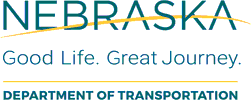Nebraska Local Technical Assistance Program

Nebraska Department of Transportation: Research Reports
Date of this Version
6-2020
Document Type
Article
Citation
Khattak, A. and Kang, Y. (2020). Research on School Zone Safety. NDOT Research Report SPR-PI (19) M092.
Abstract
This research investigated different aspects of school zone safety including the effects of speed differentials on drivers’ speeds in active school zones, the effects of school and surrounding characteristics on drivers’ speeds in active school zones, and the safety benefits and costs associated with active school zones. The research team identified 18 schools in Nebraska for data collection that consisted of drivers’ speed data, school and surrounding characteristics, and 2014-2018 reported crash data. The 18 schools were categorized by the school zone speed limit differentials: 35 to 25 mph, 40 to 25 mph, 30 to 25 mph, and 35 to 15 mph. The collected motor vehicle related data included vehicle classification, vehicle speed and time of observation. In aggregate, 378,506 vehicles were observed at the study sites. Motor vehicle speed data analysis showed that drivers at 17 of the 18 schools slowed significantly in response to active school zones. However, their non-compliance with the lowered speed limit of the active school zone increased with greater speed limit differentials. An estimated linear regression model on drivers’ speeds indicated that key contributing factors affecting drivers’ speeds were speed limit differentials, status of school zones (passive/active), vehicle classification (small, medium, large), time of day (AM/PM), presence of on-street parking and presence of traffic signals. On average drivers travelled 6.23 mph faster in passive school zones compared to when the school zones were active. Analysis of 5-year crashes showed that crash rates were higher in active school zones compared to their passive status and that this increase was consistent across motor vehicle only crashes and motor vehicle and non- motorist involved crashes. Using the Federal Highway Administration crash costs, crash severity analysis revealed that on average a crash during active school zone period cost $53,984 less than a crash during the passive school zone period. Research recommendations include the following.
-
Transportation agencies should establish school zones with great caution as higher crash rates exist in active school zones.
-
Transportation agencies can expect active school zones to mitigate crash severity and thereby provide safety benefits from
reduced crash costs.
-
Transportation agencies should exercise caution in setting speed limits for passive and active school zone periods. Due to drivers’ relatively high levels of non-compliance, speed limit differences of 15 mph should be rarely used and greater than 15 mph differences avoided.
The conclusions and recommendations in this report are based on past data when travel patterns were relatively stable. The situation with Coronavirus Disease 2019 (COVID-19) may change travel patterns especially around schools and consequently travel safety will change, depending on the arrangements adopted by school districts. A comparative study of schools with and without established school zones is recommended for the future.

